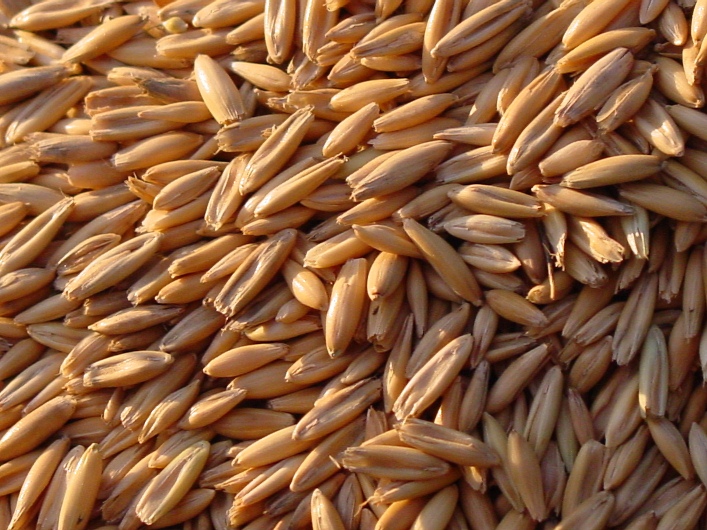Grains in Horse Feeds

Grain is one of the most traditional meals fed to horses. For years people have fed oats to race horses, corn and barley to plow horses, and the good old “cob” (Corn-Oats-Barley mix) as a treat or as a staple of the diet. With the research and studies that have been done in the past decade, we have discovered that feeding straight grain, especially in large amounts and without vitamin or mineral supplementation, is not a healthy choice for your horse. That said, grains are still very good ingredients in a horse feed when used to provide valuable sources of energy and fiber, but need to be combined with other products and adjusted to meet requirements for protein, vitamins and minerals, so that a balanced diet can be achieved.
When grains are used in horse feeds they are most commonly processed to help enhance digestion. Processing methods can include cracking, screen cracking, flaking, kibble, toasting or heat processing. The grains that can be fed to horses include triticale, wheat, rye, rice and grain sorghum although these are much less common than “The Big Three” grains that are most typically used in horse diets:
- Corn is added to feed as an energy source and provides a whopping 1.54 Mcal of digestible energy (DE) per pound. However, corn is also one of the grains that is highest in content of starch. Whole corn is not typically used in textured horse feeds unless it is processed (flaked , cracked, etc.), and fine ground corn should not be used in textured feed because it increases the risk of colic. While it has received a bit of a bad rap in recent years due to its higher starch content, it can be, and is, still a valuable piece of the formulation of a total feed, as long as the proper attention is given to the overall starch level of the finished feed.
- Oats are probably the most traditional grain fed to horses. Oats provide a source of fiber but energy content is considered low for a cereal grain, and they have a moderate amount of starch when compared to other straight grain rations. Whole oats consist of clean, cultivated oat grains. Crimped oats have the hull of the oat broken while rolled oats have been steamed and rolled flat.
- Barley is also an energy source, and has a fiber and starch content somewhere in between oats and corn. Whole barley consists of whole kernels of barley with the outer covering intact. Barley has a tougher hull than oats, so it is most commonly processed (crimped, rolled or steam flaked) when put into horse feeds. Whole barley is used in some instances, but is not ideal.
